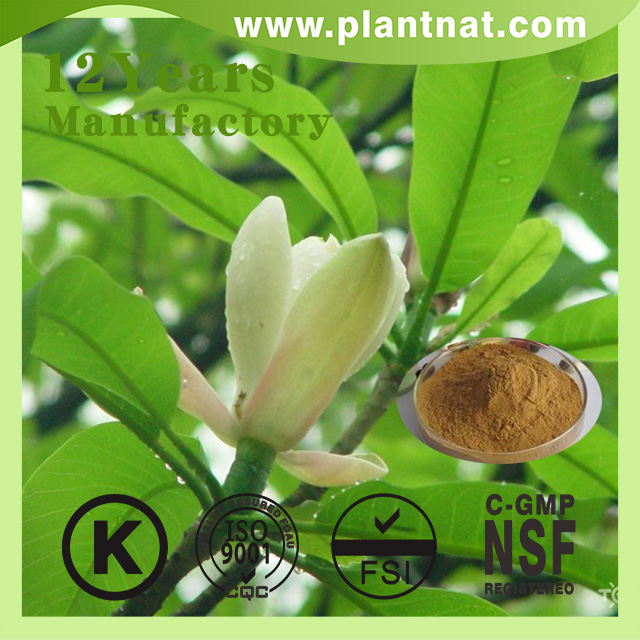Others
Description
Basic information:
Magnolia?is a large genus of about 210 flowering plant species in the subclass Magnolioideae of the family Magnoliaceae.
Magnolia is an ancient genus. Having evolved before bees appeared, the flowers developed to encourage pollination by beetles. As a result, the carpels of Magnolia flowers are tough, to avoid damage by eating and crawling beetles. Another primitive aspect of Magnolias is their lack of distinct sepals or petals.
The bark from M. officinalis has long been used in traditional Chinese medicine, where it is known as hou po.In Japan, M. obovata has been used in a similar manner. The aromatic bark contains?magnolol and honokiol, two polyphenolic compounds that may have demonstrated?anti-anxiety?and?anti-angiogenic?properties. Magnolia bark also may have been shown to?reduce allergic?and?asthmatic reactions
Magnolol?is a bioactive compound found in the bark of the Houpu magnolia (Magnolia officinalis). It is known to act on the GABAA receptors in rats, as well as having antifungal properties.
SPEC: ?? 2%, 3%, 5% Magnolol, 50%, 90%, 95%?Magnolol+Honokiol HPLC
Function:
?
1.Anti-anxiety
2.Potent and Highly Tolerable Anti-tumorigenic Effects ?Anti-depression and Anxiolytic Effects (Honokiol)
3.Act on the GABAA receptors (Magnolol)
4..Neurotrophic (Honokiol)
5.Antifungal, Anti-bacerial (Inhibit bacteria responsible for caries and periodontal disease) (Magnolol and Honokiol)
6.Anti-thrombotic Effects (Honokiol)
7.Reduce allergic and asthmatic reactions (Magnolol and Honokiol)
8.Anti-emetic Effects (Honokiol)
Application:
Applied in health products eara
Applied in medicine eara
Read More
Plantnat Bio-Tech Co.,Ltd.
plant extract herbal extract
Address: Ji Shan Industry Building No. B ,HanPu Town, Yue Lu District,
ChangSha, HuNan
China, 410000
Tel: +8618570327787
Fax: 0086-0731-88748621


